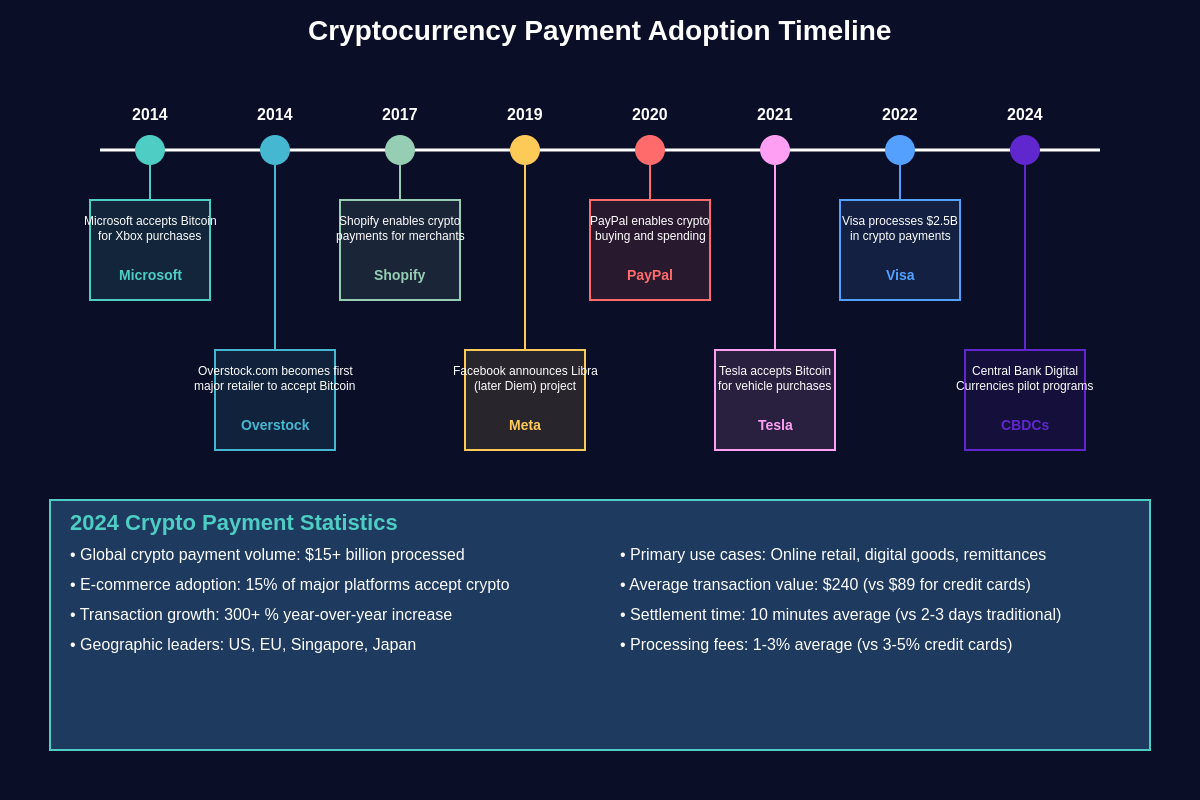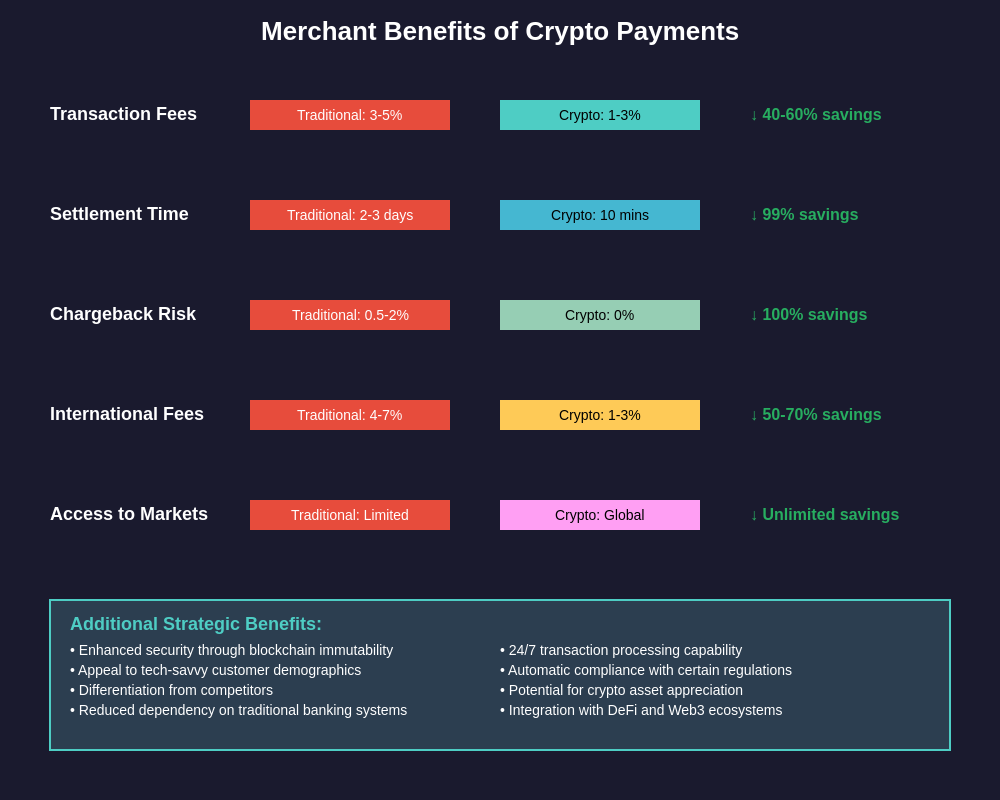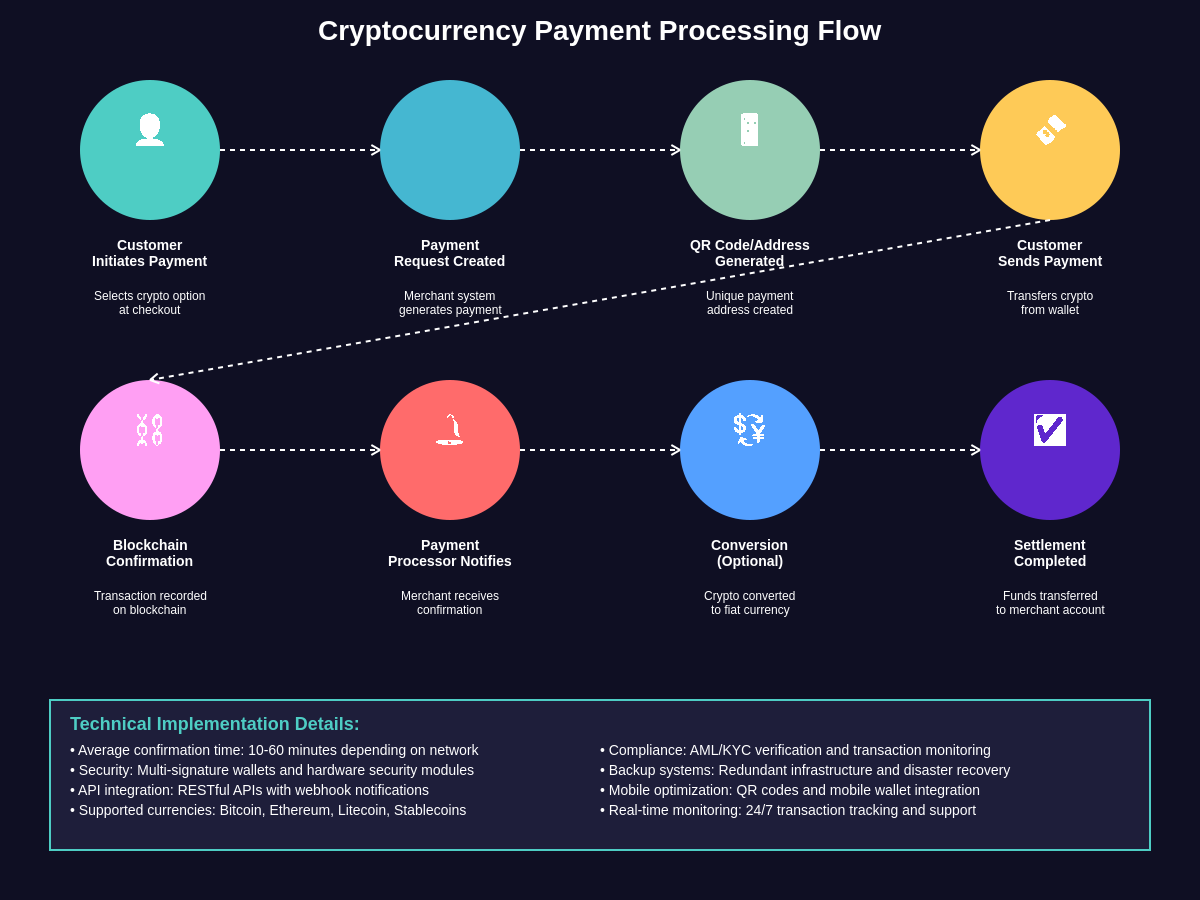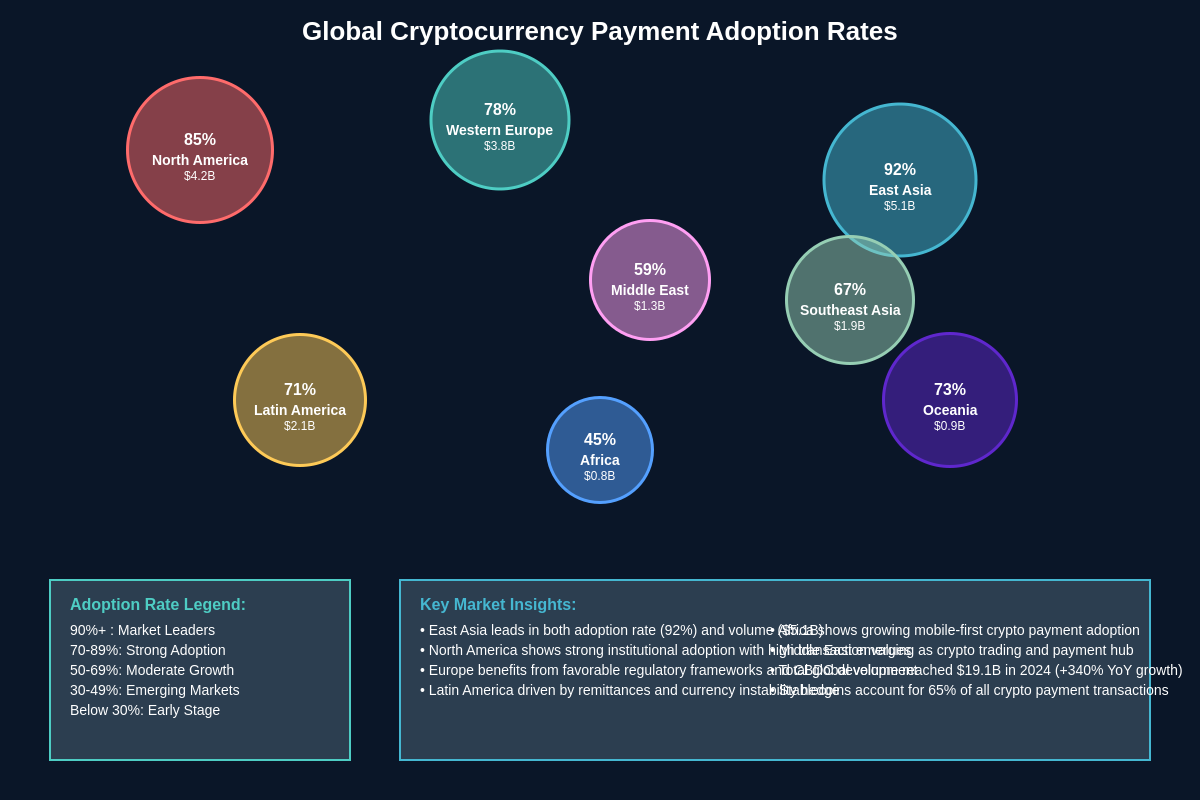TradingView Pine Script Reference
The Evolution of Digital Payments in Commerce
The landscape of retail and e-commerce payments has undergone a dramatic transformation over the past decade, with cryptocurrency emerging as a significant alternative to traditional payment methods. What began as an experimental technology embraced primarily by tech enthusiasts has evolved into a legitimate payment option adopted by major retailers, online marketplaces, and service providers worldwide. The integration of cryptocurrency payments represents not merely a technological upgrade but a fundamental shift in how businesses and consumers conceptualize money, transactions, and financial sovereignty in the digital age.
The adoption of cryptocurrency payments in retail and e-commerce environments has been driven by multiple converging factors including reduced transaction fees, enhanced security features, global accessibility, and the growing consumer demand for alternative payment methods. Major corporations such as Microsoft, Overstock, and Shopify have pioneered cryptocurrency acceptance, demonstrating that digital assets can successfully integrate into existing commercial infrastructure while providing tangible benefits to both merchants and customers. These early adopters have paved the way for broader acceptance by proving that cryptocurrency payments can be both technically feasible and commercially viable.

The technological infrastructure supporting cryptocurrency payments has matured significantly, with the development of sophisticated payment processing platforms, point-of-sale systems, and merchant services that seamlessly integrate blockchain technology with traditional retail operations. Payment processors like BitPay, Coinbase Commerce, and CoinGate have created user-friendly solutions that abstract the complexity of blockchain transactions, allowing merchants to accept cryptocurrency payments with the same ease as credit card transactions while benefiting from lower fees and faster settlement times.
Current Market Penetration and Statistics
The current state of cryptocurrency payment adoption reveals a rapidly expanding market with significant growth potential across multiple sectors. According to recent industry analyses, the global cryptocurrency payment market has experienced exponential growth, with transaction volumes increasing by over 300% year-over-year in many categories. The total value of cryptocurrency payments processed by major payment processors exceeded $15 billion in 2024, representing a substantial increase from previous years and indicating strong momentum toward mainstream adoption.
Retail adoption statistics demonstrate varying levels of cryptocurrency acceptance across different industry sectors, with technology companies, luxury goods retailers, and online services leading the adoption curve. Approximately 15% of major e-commerce platforms now offer some form of cryptocurrency payment option, while traditional brick-and-mortar retailers show lower but steadily increasing adoption rates of around 8%. The geographic distribution of cryptocurrency payment adoption shows significant variation, with developed markets like the United States, European Union, and parts of Asia leading in implementation, while emerging markets often demonstrate higher consumer demand despite lower merchant adoption rates.
Consumer behavior studies reveal interesting patterns in cryptocurrency payment usage, with younger demographics showing significantly higher adoption rates and comfort levels with digital asset transactions. The TradingView platform data indicates that cryptocurrency payment volume tends to correlate with overall market sentiment, with higher adoption during bull markets and more conservative usage during bear market periods. Transaction value analysis shows that cryptocurrency payments are particularly popular for high-value items, international transactions, and purchases where privacy or speed are prioritized.
The merchant perspective on cryptocurrency payments reveals both enthusiasm and cautious optimism, with survey data indicating that 67% of businesses accepting cryptocurrency report positive experiences and plan to expand their digital asset payment offerings. The primary benefits cited by merchants include reduced processing fees, faster settlement times, elimination of chargebacks, and access to new customer segments. However, challenges such as price volatility, regulatory uncertainty, and technical complexity continue to influence adoption decisions for many potential merchant adopters.
Technical Infrastructure and Payment Processing
The technical architecture underlying cryptocurrency payment systems represents a sophisticated integration of blockchain technology with traditional commerce infrastructure, requiring careful consideration of security, scalability, and user experience factors. Modern cryptocurrency payment processing systems employ multiple layers of technology including blockchain interfaces, payment gateways, merchant APIs, and customer-facing interfaces that work together to create seamless transaction experiences comparable to traditional payment methods.
Payment processing workflows typically involve several key components including cryptocurrency wallet integration, real-time exchange rate calculation, transaction confirmation monitoring, and settlement processing. Advanced payment processors utilize hot and cold wallet architectures to balance security with operational efficiency, employing multi-signature security protocols and automated reconciliation systems to ensure transaction integrity while maintaining the speed required for retail environments. The integration with existing point-of-sale systems requires sophisticated APIs that can handle multiple cryptocurrency types while providing real-time transaction status updates and comprehensive reporting capabilities.
Security considerations for cryptocurrency payment systems encompass both traditional cybersecurity measures and blockchain-specific protections, requiring merchants to implement comprehensive security protocols that protect against both digital theft and operational vulnerabilities. Modern payment processing platforms employ advanced encryption, secure key management, compliance monitoring, and fraud detection systems specifically designed for cryptocurrency transactions. The implementation of these security measures requires careful balance between protection and usability, as overly complex security protocols can negatively impact customer experience and adoption rates.
The scalability challenges associated with cryptocurrency payments have driven innovation in second-layer solutions, payment channels, and alternative consensus mechanisms designed to handle high transaction volumes with minimal fees and confirmation times. Lightning Network implementation for Bitcoin payments, layer-2 scaling solutions for Ethereum-based transactions, and purpose-built payment cryptocurrencies have emerged as solutions to the throughput limitations of traditional blockchain networks. These technological advances have significantly improved the viability of cryptocurrency payments for high-volume retail applications.
Regulatory Landscape and Compliance Requirements
The regulatory environment surrounding cryptocurrency payments continues to evolve rapidly, with different jurisdictions adopting varying approaches to digital asset commerce regulation that significantly impact merchant adoption strategies and operational requirements. Understanding the complex web of regulatory requirements has become essential for businesses considering cryptocurrency payment integration, as compliance failures can result in significant legal and financial consequences while proper compliance can provide competitive advantages and operational benefits.
In the United States, cryptocurrency payment regulation involves multiple federal agencies including the Treasury Department, Securities and Exchange Commission, Commodity Futures Trading Commission, and various state-level regulators, each with different jurisdictional responsibilities and regulatory approaches. The Bank Secrecy Act requirements, anti-money laundering protocols, and know-your-customer obligations apply to cryptocurrency payment processors and, in some cases, to merchants accepting digital asset payments. The regulatory framework continues to evolve with new guidance and enforcement actions that shape how businesses can legally integrate cryptocurrency payment options.
European Union regulations under the Markets in Crypto-Assets framework provide more comprehensive and unified guidance for cryptocurrency payments across member states, establishing clear requirements for cryptocurrency service providers while providing regulatory clarity that has encouraged broader adoption. The Payment Services Directive and other EU financial regulations create specific compliance obligations for cryptocurrency payment processors while establishing consumer protection standards that enhance confidence in digital asset transactions.
Tax implications of cryptocurrency payments represent another significant regulatory consideration, with different jurisdictions treating cryptocurrency transactions in various ways for tax purposes. Some countries treat cryptocurrency payments as barter transactions requiring complex tax calculations, while others have implemented more streamlined approaches that treat digital asset payments similarly to traditional currency transactions. The administrative burden of tax compliance for cryptocurrency payments continues to influence merchant adoption decisions, particularly for smaller businesses with limited accounting resources.
Consumer Adoption Patterns and Demographics
Consumer adoption of cryptocurrency payments reveals distinct demographic and behavioral patterns that provide valuable insights into the future trajectory of digital asset commerce integration. Research data consistently shows that younger consumers, particularly those aged 18-35, demonstrate significantly higher comfort levels with cryptocurrency payments, with adoption rates in this demographic reaching over 40% in some markets. This generational divide reflects broader differences in technology adoption, financial services preferences, and attitudes toward traditional banking systems.
Geographic variations in consumer cryptocurrency payment adoption reflect local economic conditions, regulatory environments, and cultural attitudes toward financial innovation. Consumers in countries with less stable traditional currencies or limited access to conventional banking services often show higher adoption rates for cryptocurrency payments, viewing digital assets as preferable alternatives to local payment options. Conversely, consumers in countries with highly developed financial infrastructure may adopt cryptocurrency payments more slowly, viewing them as additional options rather than necessary alternatives.
Income level analysis reveals interesting patterns in cryptocurrency payment adoption, with both high-income and lower-income demographics showing elevated usage rates for different reasons. High-income consumers often adopt cryptocurrency payments for privacy, investment, and technology adoption reasons, while lower-income consumers may be attracted by reduced fees, financial inclusion benefits, and access to global commerce opportunities. Middle-income consumers show more variable adoption patterns, often influenced by specific use cases and merchant availability.
The purchasing behavior of cryptocurrency payment users differs from traditional payment method users in several key ways, including higher average transaction values, increased frequency of online purchases, and greater likelihood of international transactions. Market data from TradingView suggests that cryptocurrency payment usage correlates with overall market conditions, with higher adoption during periods of cryptocurrency price appreciation and increased market attention. Consumer surveys indicate that convenience, security, and cost savings are the primary motivating factors for cryptocurrency payment adoption.
Major Retailers and E-commerce Platforms
The landscape of major retailers accepting cryptocurrency payments has expanded dramatically, with household names across various industries integrating digital asset payment options into their commercial operations. Technology companies have led this adoption wave, with Microsoft accepting Bitcoin for Xbox and Windows purchases since 2014, demonstrating early confidence in cryptocurrency commerce viability. The company’s approach to cryptocurrency payments has evolved over time, temporarily suspending and later reinstating Bitcoin payments while developing more sophisticated payment processing capabilities.
E-commerce giants have taken varied approaches to cryptocurrency integration, with some embracing digital assets enthusiastically while others remain cautious. Overstock.com became one of the first major e-commerce platforms to accept Bitcoin payments in 2014 and has since expanded to accept multiple cryptocurrencies while also investing corporate treasury funds in digital assets. The company’s experience with cryptocurrency payments has provided valuable insights into the operational, technical, and financial implications of digital asset commerce integration.
Shopify’s approach to cryptocurrency payments exemplifies the platform-level integration strategy, enabling millions of merchants to accept cryptocurrency payments through integrated payment processors rather than developing proprietary cryptocurrency payment infrastructure. This approach has democratized cryptocurrency payment acceptance by making it accessible to small and medium-sized businesses that lack the technical resources to implement cryptocurrency payment systems independently. The Shopify ecosystem now supports multiple cryptocurrency payment processors and has facilitated billions of dollars in cryptocurrency commerce transactions.
Traditional retailers have approached cryptocurrency payments with more caution, often implementing pilot programs or limited cryptocurrency payment options before broader rollouts. Home Depot, Whole Foods, and various restaurant chains have experimented with cryptocurrency payments through third-party payment processors, allowing them to test consumer demand and operational feasibility without significant infrastructure investments. The success of these pilot programs has influenced broader industry adoption patterns and demonstrated the practical viability of cryptocurrency payments in traditional retail environments.
Payment Processing Solutions and Infrastructure
The cryptocurrency payment processing industry has matured significantly, with specialized companies developing comprehensive solutions that address the technical, operational, and regulatory challenges of digital asset commerce. BitPay, one of the earliest and largest cryptocurrency payment processors, has processed over $5 billion in cryptocurrency payments and serves more than 100,000 merchants worldwide. The company’s platform supports multiple cryptocurrencies, provides real-time conversion to fiat currency, and offers comprehensive merchant tools including invoicing, payment buttons, and detailed analytics.
Coinbase Commerce represents another major player in the cryptocurrency payment processing space, leveraging Coinbase’s extensive cryptocurrency exchange infrastructure to provide merchant payment services. The platform supports over 50 cryptocurrencies and provides merchants with direct custody of received payments, eliminating counterparty risk associated with payment processor custody. Coinbase Commerce integrates with major e-commerce platforms and provides comprehensive APIs for custom integration scenarios.
The technical architecture of modern cryptocurrency payment processors involves sophisticated systems for real-time exchange rate calculation, transaction monitoring, settlement processing, and regulatory compliance. These systems must handle the unique challenges of cryptocurrency transactions including confirmation times, network congestion, fee optimization, and price volatility while providing the reliability and performance expected in commercial environments. Advanced payment processors employ machine learning algorithms for fraud detection, automated fee optimization, and transaction routing to ensure optimal performance and security.
Third-party integration solutions have emerged to bridge the gap between cryptocurrency payment processors and existing merchant infrastructure, providing plugins, APIs, and middleware that simplify cryptocurrency payment implementation. These solutions often include features such as automatic tax calculation, accounting system integration, and customer support tools that reduce the operational burden of cryptocurrency payment acceptance. The availability of these integration solutions has significantly reduced the technical barriers to cryptocurrency payment adoption for many merchants.
Benefits and Challenges for Merchants
The benefits of cryptocurrency payment acceptance for merchants encompass both immediate operational advantages and strategic business opportunities that can provide significant competitive advantages in the evolving digital commerce landscape. Reduced transaction fees represent one of the most immediate and tangible benefits, with cryptocurrency payment processing typically costing 1-3% compared to 3-5% for traditional credit card processing. For high-volume merchants, these fee reductions can translate to substantial cost savings that directly impact profitability and pricing strategies.
Elimination of chargebacks provides another significant operational benefit, as cryptocurrency transactions are irreversible once confirmed on the blockchain. This characteristic protects merchants from fraudulent chargeback claims while reducing the administrative overhead associated with chargeback management and dispute resolution. The elimination of chargeback risk is particularly valuable for merchants in high-risk industries or those selling digital goods where chargeback fraud is common.
Access to global markets represents a strategic advantage of cryptocurrency payment acceptance, as digital assets can facilitate international transactions without the complexity and cost of traditional international payment processing. Cryptocurrency payments can enable merchants to serve customers in regions where traditional payment methods are unavailable or prohibitively expensive while avoiding foreign exchange risk and international banking requirements. This global accessibility can significantly expand potential customer bases and revenue opportunities.
However, merchants accepting cryptocurrency payments also face several significant challenges that require careful consideration and management. Price volatility remains a primary concern, as the value of received cryptocurrency can fluctuate significantly between transaction time and conversion to fiat currency. While many payment processors offer immediate conversion services, merchants who choose to hold cryptocurrency face potential losses due to price movements. Some merchants view this volatility as an opportunity for potential gains, but it requires careful risk management and financial planning.

Technical Implementation and Integration
The technical implementation of cryptocurrency payment systems requires careful planning and execution to ensure seamless integration with existing merchant infrastructure while maintaining security and performance standards. Modern implementation approaches typically involve choosing between hosted payment solutions that handle cryptocurrency processing externally and direct integration approaches that provide greater control but require more technical expertise. The decision between these approaches depends on factors including technical capabilities, security requirements, transaction volumes, and desired level of customization.
API-based integration represents the most common approach for implementing cryptocurrency payments, with payment processors providing RESTful APIs that can be integrated into existing e-commerce platforms, mobile applications, and point-of-sale systems. These APIs typically provide functions for payment creation, transaction monitoring, webhook notifications, and settlement processing while abstracting the complexity of blockchain interactions. The integration process usually involves obtaining API credentials, implementing payment flow logic, handling webhook callbacks, and testing transaction processing across multiple scenarios.
Point-of-sale integration for physical retail environments requires specialized solutions that can handle the unique requirements of in-person cryptocurrency transactions. Modern POS systems for cryptocurrency payments often include QR code generation for customer wallet scanning, real-time transaction monitoring, receipt generation, and integration with inventory management systems. The implementation of these systems requires consideration of factors including network connectivity, transaction confirmation times, and customer experience optimization.
Security implementation for cryptocurrency payment systems requires comprehensive approaches that address both traditional cybersecurity concerns and blockchain-specific vulnerabilities. Proper security implementation includes secure API key management, encrypted communication protocols, secure wallet key storage, transaction monitoring, and fraud detection systems specifically designed for cryptocurrency transactions. The security implementation must balance protection requirements with usability considerations to ensure that security measures do not negatively impact customer experience or transaction success rates.

Cross-border Payments and Global Accessibility
The global accessibility advantages of cryptocurrency payments have particular significance for cross-border commerce, where traditional payment methods often involve high fees, long settlement times, and complex regulatory requirements. Cryptocurrency payments can facilitate international transactions with significantly reduced friction, enabling merchants to serve global customers more effectively while providing consumers with access to international merchants that might otherwise be inaccessible through traditional payment channels.
The elimination of traditional banking intermediaries in cryptocurrency transactions provides particular advantages for merchants serving customers in regions with limited banking infrastructure or where international wire transfers are expensive or unreliable. Countries with currency controls, banking restrictions, or limited access to international payment processors can often access global e-commerce through cryptocurrency payments, creating new market opportunities for forward-thinking merchants.
Settlement time advantages for international cryptocurrency transactions can be substantial compared to traditional international payment methods, with cryptocurrency transactions typically settling within minutes to hours rather than the days or weeks required for international wire transfers. This faster settlement enables improved cash flow management for merchants and provides customers with immediate access to purchased goods or services. The real-time market data available on TradingView helps merchants monitor cryptocurrency markets and optimize their international payment strategies.
However, cross-border cryptocurrency payments also face unique challenges including varying regulatory requirements across jurisdictions, complex tax implications, and the need for compliance with multiple legal frameworks. Merchants engaging in international cryptocurrency commerce must navigate anti-money laundering regulations, know-your-customer requirements, and taxation rules that may differ significantly across their customer base. These compliance requirements can add complexity and cost to international cryptocurrency payment operations.

Security Considerations and Risk Management
Security considerations for cryptocurrency payment systems encompass multiple layers of protection designed to safeguard merchant assets, customer information, and transaction integrity throughout the payment process. The unique characteristics of cryptocurrency transactions, including irreversibility and pseudonymity, create both security advantages and challenges that require specialized risk management approaches tailored to the digital asset environment.
Wallet security represents a fundamental component of cryptocurrency payment security, with merchants needing to implement robust key management practices that protect private keys while enabling efficient transaction processing. Hot wallet security for operational transactions requires sophisticated access controls, multi-signature protocols, and real-time monitoring systems that can detect and respond to suspicious activities. Cold storage security for longer-term cryptocurrency holdings involves offline key storage, secure backup procedures, and carefully designed access protocols that balance security with operational requirements.
Transaction security involves monitoring and validation systems that can detect fraudulent transactions, double-spending attempts, and other blockchain-specific attack vectors while ensuring that legitimate transactions are processed efficiently. Advanced security systems employ machine learning algorithms to analyze transaction patterns, identify suspicious behaviors, and implement automated response protocols that can prevent losses while minimizing false positives that could impact legitimate customers.
The human element of cryptocurrency payment security requires comprehensive staff training, clear security procedures, and regular security audits that ensure all personnel handling cryptocurrency operations understand and follow proper security protocols. Social engineering attacks targeting cryptocurrency payment systems often focus on human vulnerabilities rather than technical weaknesses, making employee education and security awareness critical components of overall security strategies.
Consumer Protection and Dispute Resolution
Consumer protection mechanisms for cryptocurrency payments present unique challenges due to the irreversible nature of blockchain transactions and the decentralized architecture of cryptocurrency networks. Traditional payment method protections such as chargebacks, payment reversals, and dispute resolution processes must be reimagined for cryptocurrency environments while maintaining adequate consumer protection standards that encourage adoption and confidence.
Escrow services and smart contract-based protection mechanisms have emerged as solutions for providing consumer protection in cryptocurrency transactions, with various platforms offering automated escrow services that hold funds until transaction completion conditions are met. These systems can provide dispute resolution mechanisms while maintaining the benefits of cryptocurrency payments, though they add complexity and may require additional fees that reduce some of the cost advantages of digital asset transactions.
Insurance solutions for cryptocurrency payments are evolving to provide protection for both merchants and consumers against various risks including theft, fraud, technical failures, and operational errors. Specialized cryptocurrency insurance products can cover losses due to security breaches, technical failures, or other covered events while providing the confidence necessary for broader adoption. However, cryptocurrency insurance remains expensive and may not cover all potential loss scenarios.
Regulatory developments in consumer protection for cryptocurrency payments continue to evolve, with various jurisdictions implementing specific protections for cryptocurrency payment users while balancing innovation encouragement with consumer safety. These regulatory frameworks often address issues such as disclosure requirements, dispute resolution procedures, and liability allocation between merchants, payment processors, and consumers in cryptocurrency transaction disputes.
Future Trends and Technological Developments
The future of cryptocurrency payments in retail and e-commerce is being shaped by several technological developments that promise to address current limitations while expanding the possibilities for digital asset commerce integration. Central Bank Digital Currencies represent one of the most significant developments, with many countries developing or implementing digital versions of their national currencies that could provide the benefits of cryptocurrency payments while maintaining regulatory oversight and stability.
Layer-2 scaling solutions for major cryptocurrency networks are addressing the scalability and cost challenges that have limited cryptocurrency payment adoption in high-volume retail environments. The Lightning Network for Bitcoin, Ethereum Layer-2 solutions, and other scaling technologies promise to enable cryptocurrency payments with the speed and cost characteristics necessary for widespread retail adoption while maintaining the security and decentralization benefits of blockchain technology.
Integration of cryptocurrency payments with emerging technologies including artificial intelligence, Internet of Things devices, and autonomous systems could create new paradigms for automated commerce and machine-to-machine payments. These integrations could enable new business models and customer experiences that leverage the programmable nature of cryptocurrency payments to create more sophisticated and automated commercial interactions.
Stablecoin adoption for retail payments continues to grow as these digital assets provide the benefits of cryptocurrency payments while reducing the volatility concerns that have limited broader adoption. The development of more sophisticated stablecoin systems, including Central Bank Digital Currencies and algorithmic stablecoins, could provide the price stability necessary for mainstream retail adoption while maintaining the technological advantages of blockchain-based payments.
TradingView Pine Script Reference
Conclusion
The adoption of cryptocurrency payments in retail and e-commerce represents a significant transformation in the global payments landscape, driven by technological innovation, changing consumer preferences, and the evolving needs of merchants operating in an increasingly digital economy. While challenges related to volatility, regulation, and technical complexity continue to influence adoption rates, the fundamental advantages of cryptocurrency payments including reduced fees, global accessibility, enhanced security, and financial sovereignty continue to drive growth and innovation in this space.
The success stories of early adopting merchants and the continuous development of supporting infrastructure demonstrate that cryptocurrency payments have moved beyond experimental implementation to become viable commercial solutions with real business value. As regulatory frameworks mature, technical solutions improve, and consumer familiarity increases, cryptocurrency payments are positioned to become an increasingly important component of the global payments ecosystem.
The future trajectory of cryptocurrency payment adoption will likely be influenced by the success of scaling solutions, the development of regulatory clarity, and the evolution of consumer payment preferences. Merchants and payment providers who understand and prepare for these developments will be best positioned to capitalize on the opportunities presented by the continuing evolution of digital asset commerce.
Disclaimer: This article is for informational purposes only and should not be considered financial advice. Cryptocurrency investments and transactions carry inherent risks including price volatility, regulatory changes, and technical vulnerabilities. Always conduct thorough research and consider consulting with qualified financial advisors before making investment decisions or implementing cryptocurrency payment systems. Past performance does not guarantee future results, and all financial decisions should be made based on individual circumstances and risk tolerance.